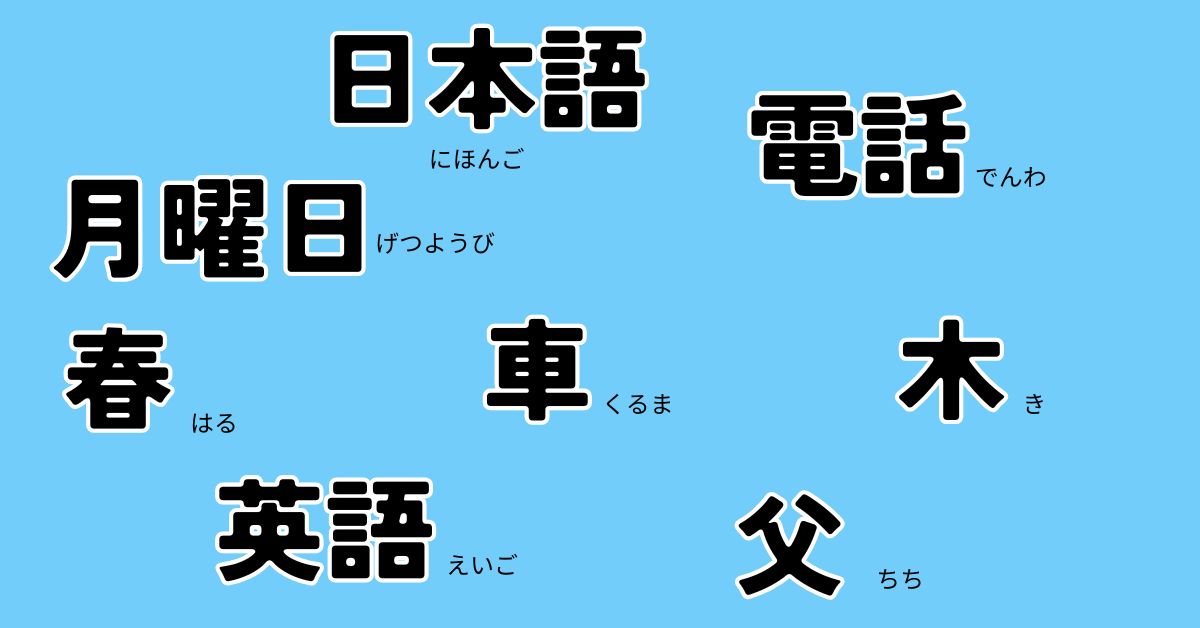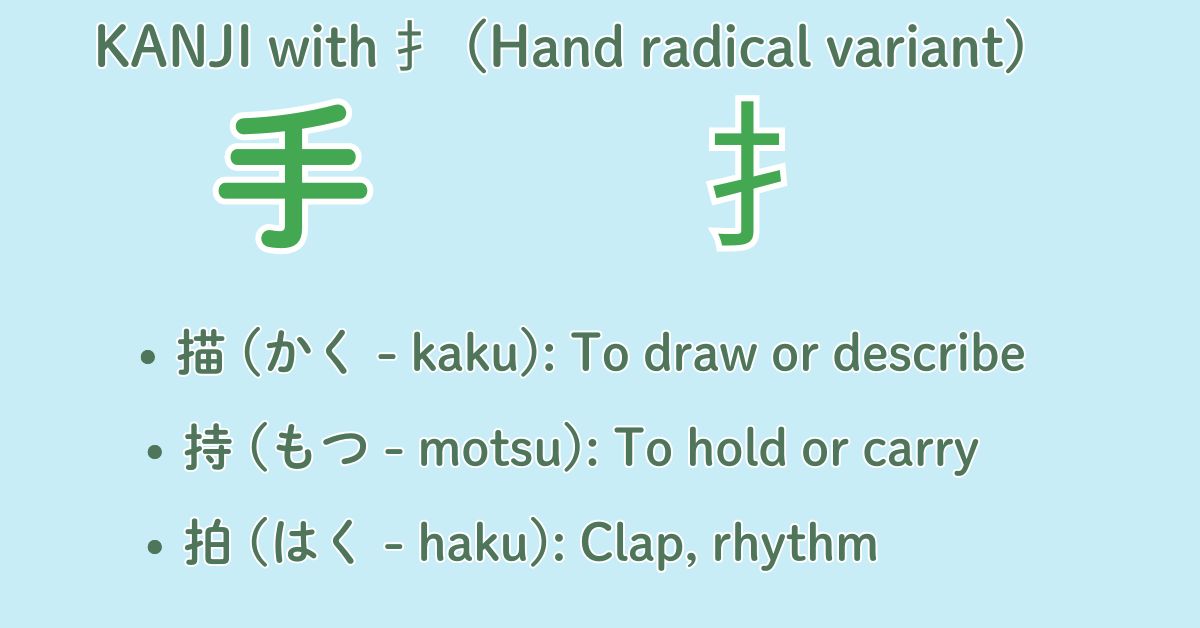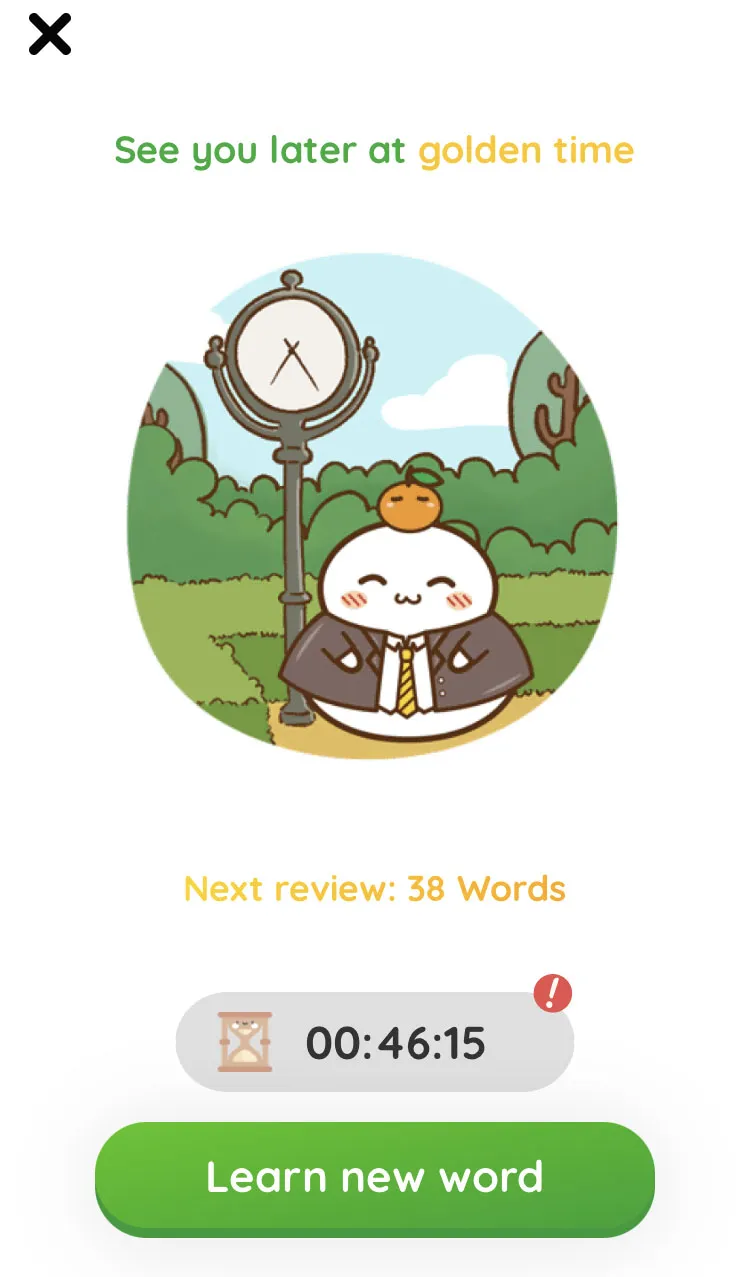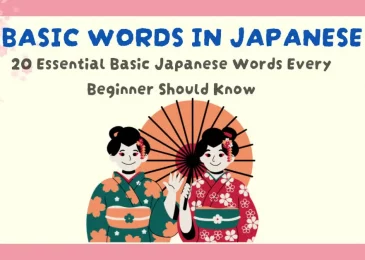1. What is Kanji?
Kanji is one of the three primary writing systems in Japanese, alongside Hiragana and Katakana. Kanji characters were originally adopted from Chinese, and each character represents a specific meaning or concept. Some Kanji characters can stand alone as a word, while others are combined to form more complex words or expressions. Each Kanji can also have multiple pronunciations, often depending on its context within a sentence. Generally, these readings are categorized into On-yomi (the original Chinese reading) and Kun-yomi (the native Japanese reading).
Although there are thousands of Kanji in existence, starting with the basic Kanji characters commonly used in daily life or categorized for each proficiency level (such as N5 for beginners) is an effective approach to begin learning Kanji.
2. Why Learning Kanji Seems Difficult
For many learners, Kanji is the most challenging aspect of learning Japanese. One reason for this is the visual complexity of Kanji characters, which can have numerous strokes and intricate shapes. Unlike an alphabet with a limited set of letters, each Kanji character is unique, and the language relies heavily on memorizing each symbol individually.
Furthermore, each Kanji has multiple readings, or pronunciations, that vary depending on the context in which they are used. For instance, the Kanji for “water” (水) is read as “mizu” in some contexts but “sui” in others, and many Kanji follow similar patterns. This multiplicity can make remembering the readings and meanings difficult, especially for beginners.
Another reason Kanji may feel overwhelming is the sheer number of characters needed for literacy. The Japanese Ministry of Education identifies over 2,000 Kanji as essential for everyday reading and writing.
3. How to Start Learning Kanji: Beginner Tips
Learning Kanji can seem daunting, but understanding how to learn Kanji starts with the basics. Here are beginner tips to help you.
- Learn Basic Kanji Radicals
Radicals are smaller components that combine to form more complex Kanji characters. Think of them as the “building blocks” of Kanji; each radical has its own meaning, and many are repeated across different characters.
For example, the radical 扌often appears in Kanji related to actions involving the hand, such as 持 (mochi, meaning “hold”) and 打 (da, meaning “hit”). By familiarizing yourself with common radicals, you can begin to see connections and patterns among Kanji, which makes the characters easier to memorize and understand. Starting with around 50 of the most common radicals can give you a head start, helping you recognize the structure of hundreds of more complex characters over time.
- Start with Common Kanji
In Japanese, there are thousands of Kanji, but only a fraction are frequently used in daily life. The Japanese Language Proficiency Test (JLPT) N5 level includes some of the most essential Kanji for beginners, typically covering around 100 basic characters. These include Kanji for numbers (like 一 for “one” and 二 for “two”), simple nouns (like 人 for “person”), and verbs (like 見 for “to see”). As you learn these common Kanji, practice using them in simple words and sentences to reinforce their meanings and pronunciations.
- Use Mnemonics to Aid Memory
Mnemonics are an essential tool in learning Kanji. Kanji characters with images, stories, or associations that make them easier to remember. Since many Kanji characters have abstract shapes, creating vivid associations can make them more memorable.
For instance, the Kanji 山 (yama) meaning “mountain,” resembles the shape of three peaks, so you might imagine it as a picture of mountains. Or, to remember the Kanji for “tree” (木, ki), you could think of it as a tree with branches extending outward.
- Practice Writing Kanji by Hand
Writing Kanji by hand can be especially helpful for beginners. It’s a great way to learn the correct stroke order, which is crucial for memorization and clarity.
Kanji strokes are typically written in a specific order, starting from left to right and top to bottom. Following this order not only helps with memorization but also ensures that characters look balanced and recognizable. Writing by hand also reinforces your memory, which can make recalling Kanji easier when reading or typing. Start by practicing each Kanji several times, paying attention to its individual strokes, and then work on writing simple words that use the Kanji you’ve learned.
- Use Spaced Repetition and Flashcards
Spaced repetition is a proven technique for retaining information, especially when learning something as memory-intensive as Kanji. Apps like MochiKanji use spaced-repetition algorithms to present Kanji characters at intervals based on your recall strength, ensuring you review each character before you forget it. Flashcards can also help reinforce your memory, particularly when combined with mnemonics.
On each flashcard, include the Kanji, its readings, meanings, and an example sentence if possible. This method ensures you focus on retention, a crucial part of how to learn Kanji efficiently.
By following these beginner-friendly tips, you’ll develop a consistent learning routine, gain confidence, and gradually build up your Kanji knowledge. Remember, how to learn Kanji is a long-term journey, but with steady progress and the right tools, each step forward brings you closer to fluency.
5. Practice Kanji in Daily Life
Once you’ve learned some basic Kanji, practicing them in real-life situations can help solidify your understanding and improve your ability to recognize and recall them. Here are some practical ways to incorporate Kanji into your daily life:
- Read Japanese Materials
Reading Japanese texts, whether it’s a book, manga, article, or even a Japanese website, is a fantastic way to see Kanji in context. Manga, in particular, can be helpful for beginners since it often includes furigana (small Hiragana characters above the Kanji) to show the pronunciation. Seeing Kanji in sentences allows you to understand how they function in different contexts and recognize how the meaning changes based on surrounding words. Start with simple materials that match your current proficiency, then gradually move on to more challenging texts as you expand your Kanji knowledge.
- Watch Japanese Media with Subtitles
Watching Japanese shows, movies, or YouTube videos with Japanese subtitles can help you become more familiar with Kanji used in everyday conversation. Japanese subtitles allow you to connect spoken words with their written form, which can deepen your understanding of how to learn Kanji through real-life applications. Recognizing a handful of Kanji repeatedly used in various contexts will gradually improve your ability to read and understand them intuitively.
- Write Notes in Kanji
A great way to reinforce what you’ve learned is by writing in Kanji as much as possible. Start a journal or write daily notes where you can incorporate new Kanji into sentences. This can include things like a to-do list, daily diary, or short sentences describing your day. Writing by hand helps you practice correct stroke order and recall each character’s meaning, solidifying your memory through active use. Over time, as you write more complex sentences, you’ll see improvements in your ability to recall and combine Kanji naturally.
6. Common Mistakes to Avoid When Learning Kanji
- Focusing on Too Many Kanji at Once
One of the biggest mistakes new learners make is trying to memorize too many Kanji at once. It’s tempting to aim for a high daily or weekly target, but overloading yourself with too many new characters can lead to burnout and make it harder to retain information. Instead, focus on a manageable number of Kanji each week—perhaps five to ten characters. This allows you to focus on quality over quantity, giving each character the attention it needs for long-term retention.
- Ignoring Stroke Order
Stroke order might seem like a minor detail, but it’s actually essential for writing Kanji legibly. Writing each character in the correct sequence makes it look balanced and easy to read, which is important if you’re writing for others or studying for exams. Proper stroke order also aids in memorization, as the act of following a consistent sequence helps reinforce the character’s shape. Practicing correct stroke order from the beginning will make learning more complex Kanji easier as you progress.
- Skipping Radicals
Radicals are the foundational components of Kanji, and skipping them can make the learning process harder. Radicals often hint at the meaning or pronunciation of the Kanji, so knowing them can simplify your studies. For example, the radical 氵found in Kanji like 河 (kawa, meaning “river”) and 海 (umi, meaning “sea”) suggests a connection to water. Learning radicals first allows you to recognize patterns within characters, making it easier to guess meanings or recall characters even if you forget their exact structure.
7. How Long Does It Take to Learn Kanji?
The time it takes to learn Kanji varies widely depending on your goals, available time, and study habits. Understanding how to learn Kanji effectively is a gradual process that can take anywhere from a few months to several years, depending on the proficiency level you aim for.
Conclusion
Mastering Kanji takes time, but with the right tools and a daily commitment, you can make significant progress. Whether you’re using apps, practicing by hand, or immersing yourself in Japanese media, each step brings you closer to Kanji fluency. Stick with it, and watch your understanding of how to learn Kanji grow.









